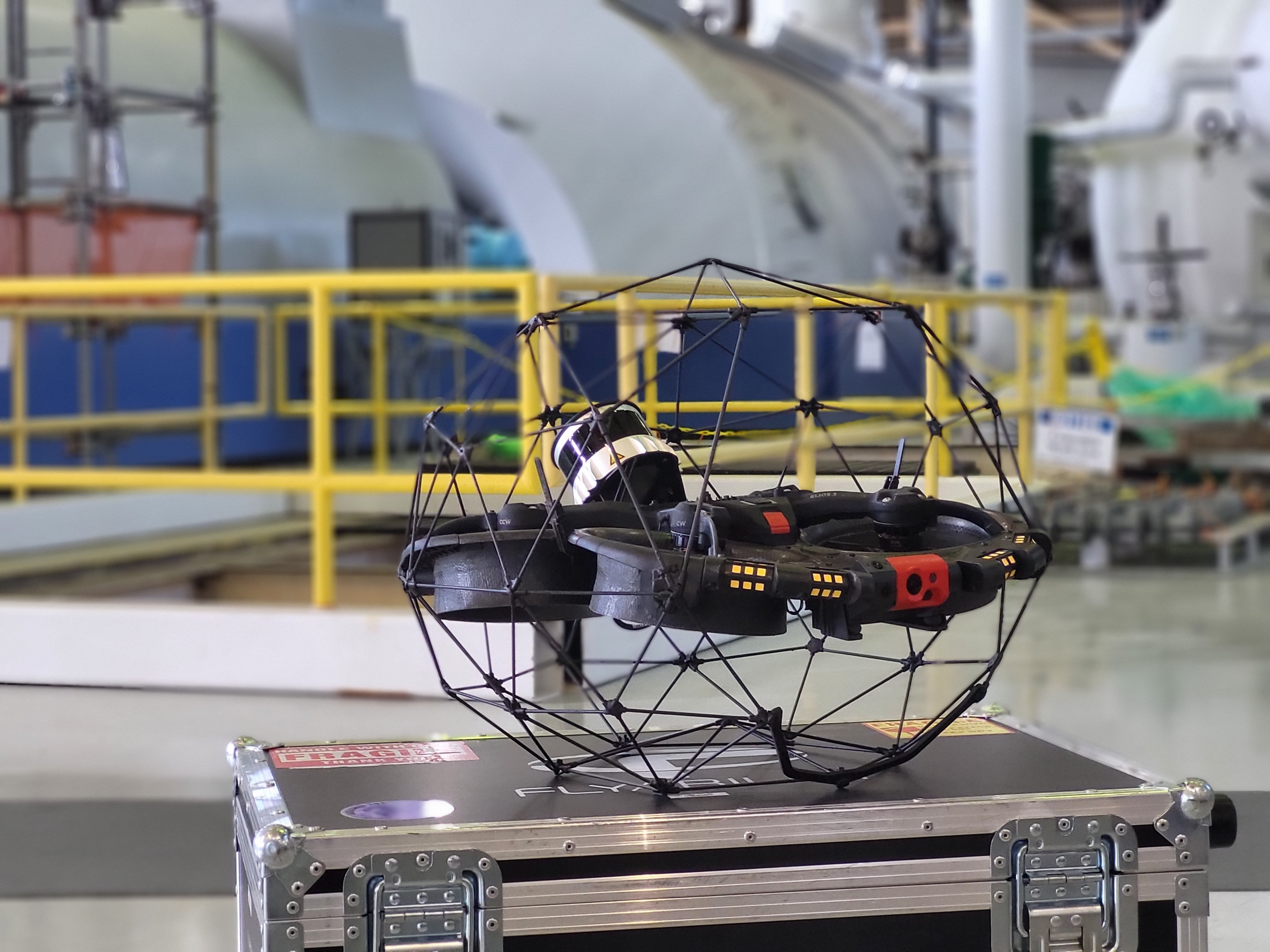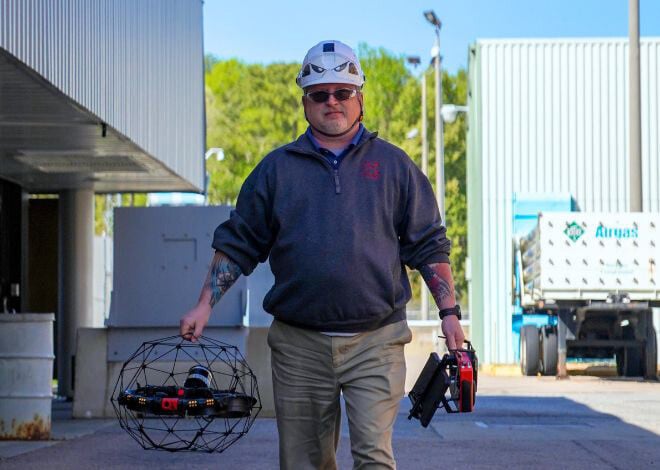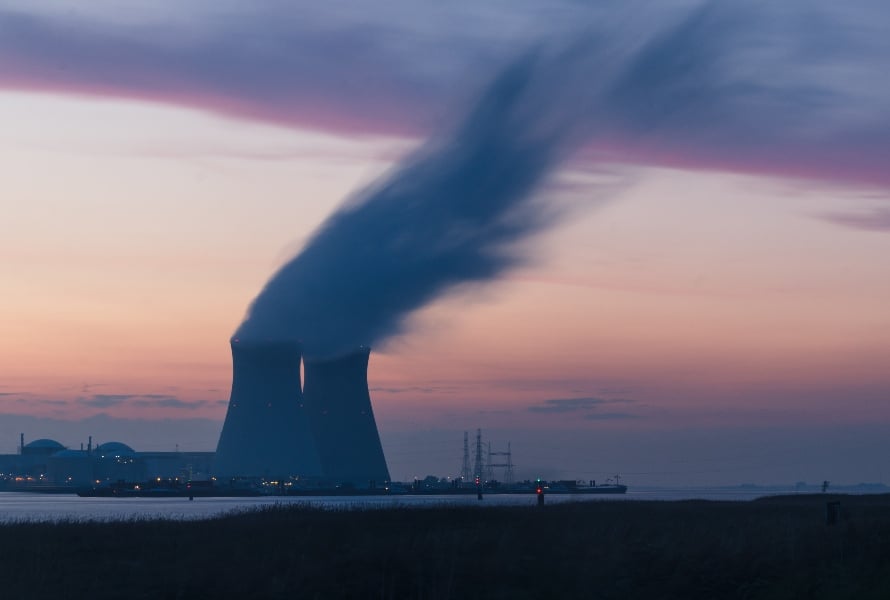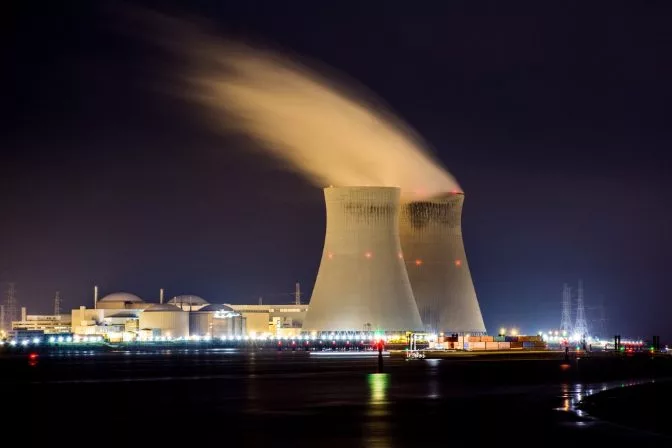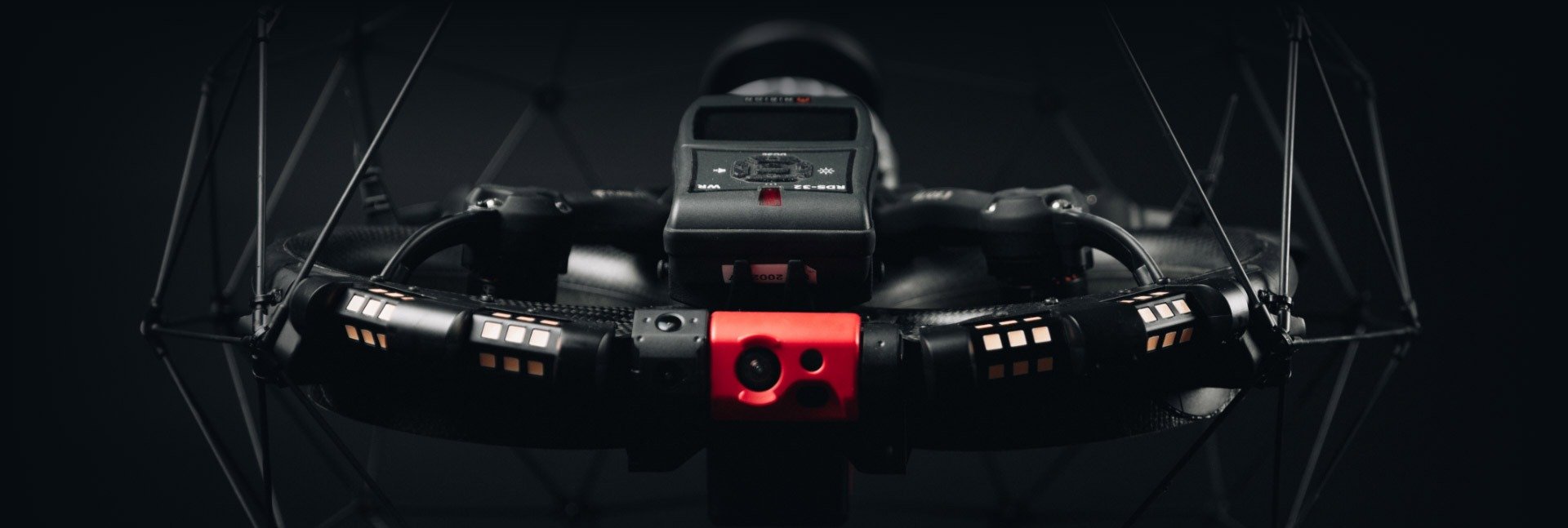- Blog >
- How Drones are Improving Cooling Tower Inspections
How Drones are Improving Cooling Tower Inspections
Any industrial site with a cooling tower will understand the unique challenges these assets pose. Inspections involve work at height or in confined spaces. Now, drones offer a simpler way to inspect cooling towers.
If you picture a nuclear power plant, you’d likely imagine the large, concrete structures alongside the other buildings that we typically associate with nuclear sites. These are cooling towers, and they’re a vital part of many industrial processes. Cooling towers are used to remove the heat absorbed in water cooling systems, and they’re not unique to nuclear sites. Their primary function of transferring waste heat from industrial work makes them highly useful for many different types of processes. Cooling towers are used at various power generation facilities, as well as at refineries, natural gas processing plants, food processing centers, semiconductors, and other major industrial sites.

Cooling towers are a difficult structure to miss - and can be even more challenging to inspect. Could drones be the solution?
While cooling towers are an iconic landmark you can see from miles away, they can be complicated assets to manage. The largest cooling tower as of 2025 is at the coal power plant Pingshan II, which is located in China. The cooling tower on this site measures 210 meters (680 feet) above the ground. Although it is an integral part of the single largest coal unit in the world, the impressive structure begs the question: how do you maintain it?
This is where the challenges behind cooling tower inspections arise. Our blog article dives into the missions and methods involved in managing these huge structures, along with how we can use drones for cooling tower inspections to improve operational efficiency and safety.
What is a cooling tower inspection?
A cooling tower inspection is conducted to check that the tower is able to run correctly, providing optimal performance that supports the overall site’s operations. The areas of a cooling tower that will be inspected depend on the design - for instance, the hot water distribution system can be pipes, fans, or sprinklers, each of which requires a slightly different inspection.
Different industrial sites will have different components within their cooling towers, making most inspections unique. As a rule, all cooling tower inspections need to check the interior and exterior of the structure, the water distribution system, the support structures, and the water basin at its base. The structural elements need to be checked for issues such as wall thinning, biological fouling, or concrete defects.
There are some factors that affect the frequency of cooling tower inspections. For example, industrial sites with high usage and older assets will likely have to schedule more frequent inspections as the intensity of operation and age of the cooling towers can require greater inspection frequency. If the water being circulated is mineral-rich, this can cause a buildup of sediment deposits that can cause blockages or disrupt normal operations. This requires additional treatment or more frequent inspections too. Finally, drastic changes in temperature - such as in environments with extreme seasons - can also cause the structure to degrade faster than in other locations. This in turn triggers seasonal inspection rhythms.
How are cooling towers inspected?
The method of inspection for cooling towers depends on the size, location, and structure of the tower being inspected. Metallic cooling towers held within a single, larger building may be accessed from within the building, whilst the upper rim of a 200-meter-tall concrete tower will likely need scaffolding, cherry pickers, or potentially remote access via a drone. External inspectors may also have to be present for an inspection to ensure compliance with local or industry regulations.
Access becomes the principal challenge behind cooling tower inspections. Draw points for water make it possible to test the water distribution and pumping systems, but visual inspections of the inner and outer structure of a cooling tower become complicated when the way is blocked by fan systems or if the tower is large.
The traditional ways to access a cooling tower for an inspection include:
- Scaffolding – building an external structure with scaffolding makes it possible to move around the cooling tower with ease, but is slow, costly, and exposes staff to work at height and fall risks.
- Rope access – this is a maneuverable method of inspection, with highly trained inspectors using rope systems to suspend themselves on the inside or outside of a structure to conduct visual and/or ultrasonic thickness inspections. It provides a high level of detail but can be slow and requires specially trained inspectors who must work at height.
- Cherry pickers – Faster to deploy than scaffolding, cherry pickers offer quick access to specific locations, but is slow and cumbersome to move when multiple points are being assessed. This can be used for inspecting a pre-identified problem or repairing a defect, however, it is a costly and dangerous inspection method as it requires specialized equipment and work at height.
A traditional cooling tower inspection can take over 10 days and relies on the inspector to carefully report and log the location of defects as well as record changes over time. Accurate reports are necessary to analyze the difference between inspections and calculate rates of degradation. Work at height, as with scaffolding or cherry pickers, is expensive and dangerous, as well as slow. This can lead to prolonged shutdown times, which in turn increases the time an asset is out of commission. In some sites, this is less of a problem if they have multiple cooling towers but for many, this is a real loss of income that has a knock-on effect.

A newer, more modern way of inspecting cooling towers is with drones. Drones are presenting a real means of gathering visual data quickly and effectively. There are a variety of drone models available for industrial inspections, but not all can inspect confined spaces or inner structures with ease, requiring teams to carefully select the appropriate cooling tower inspection drone.
Optimizing cooling tower inspections requires turning to more modern solutions, which is where drones like the Elios 3 come into play
Using Drones for Cooling Tower Inspections
When it comes to cooling tower inspection technology, drones may seem like a very small tool for such a large problem. It is true that not all drones are appropriate for this type of application - some cannot fly in confined spaces or close to structures without the risk of collision. This is where customized inspection drones make the difference.
The best example is the Elios 3. Designed in Switzerland, this drone flies inside a protective cage. It has custom firmware that helps it recognize and recover from impact, making it collision-tolerant. This means the drone can be flown into complex environments, including access hatches for metal, fan-covered cooling towers or up close along concrete walls.
The data collected by a drone during a cooling tower inspection is critical, as the remote access is of little use without quality data. The Elios 3 can gather multiple types of data simultaneously, saving time while also providing safe, remote inspections. The drone has a 4K video camera alongside a centimeter-accurate LiDAR payload. It can also be equipped with an additional ultrasonic thickness (UT) payload for measuring steel or metal thickness. Altogether, the drone creates 3D models with its LiDAR scanner as it flies while the pilot can log points of interest with the camera or take ultrasonic thickness measurements. After the flight, these points are localized within the 3D model to create a detailed, accurate digital twin of the cooling tower. This record can be used to track changes over time as well as plan maintenance and construction work.
Case Study: Inspecting 4 Cooling Towers in 10 Days with a Drone
This type of drone cooling tower inspection is not a theoretical exercise - there are real-world examples from across the globe. In one example, a Czech robotic inspections company VZU Plzen used the Elios 3 drone to visually inspect the cooling towers at a nuclear power plant. They inspected 16,000 points of interest across several structures, which were over 100 meters tall. Over the course of 300 drone flights, the inspectors from Vzu Plzen inspected 4 separate cooling towers in just 10 days with incredible detail. Compared to traditional inspection methods, where only 1 cooling tower can be inspected in 10 days, this is a drastic improvement in inspection efficiency. VZU Plzen’s success thoroughly impressed the client while keeping their inspectors safely on the ground.
Read the full case study on NDT testing with the Elios 3 in the energy sector on our blog.
.jpg?width=4000&height=2250&name=20230501_161202%20(1).jpg)
An Elios 3 pilot from VZU Plzen controls the drone from underneath the cooling tower
Benefits of Drones for Cooling Tower Inspections
The benefits of drones for cooling tower inspections are simple yet pivotal. We can break them down into 3 key factors:
-
- Ease of Access: drones provide remote access and can be deployed in minutes. This does not require in-advance booking for scaffolding crews or coordination of moving a cherry-picker into position. Drones like the Elios 3 can be brought onto the site and deployed near-immediately, gathering data straightaway. This can be used for investigating a potential hazard or as part of wider, routine inspections. In addition, the flexibility of drone applications means it is likely that other asset management projects on the same site can also use the drone when it is not needed for cooling tower inspections.
- Safety: a drone inspection for cooling towers immediately eliminates the associated risks from traditional inspections. This includes work at height, fall risks, as well as drop hazards. For some cooling towers within a wider structure, the use of drones can remove confined space entry. This typically requires additional training and safety checks which slow down the overall inspection process. Instead, a drone can be used by the inspector to gather the necessary data without risk exposure. It is a safer and often faster method of data collection.
- Cost Efficiency: Hand-in-hand with the improvements to access and safety comes overall cost efficiency. Drones reduce the inspection time and associated risks, which saves time and money. The reduction in human risk exposure also requires fewer safety assessments which again reduces the costs associated with the inspection and the time taken. As a result, drone cooling tower inspections are typically faster, safer, and can help cut the time an asset is out of commission.
- Ease of Access: drones provide remote access and can be deployed in minutes. This does not require in-advance booking for scaffolding crews or coordination of moving a cherry-picker into position. Drones like the Elios 3 can be brought onto the site and deployed near-immediately, gathering data straightaway. This can be used for investigating a potential hazard or as part of wider, routine inspections. In addition, the flexibility of drone applications means it is likely that other asset management projects on the same site can also use the drone when it is not needed for cooling tower inspections.
Cooling Tower Inspections: Modernizing with Drone Technology
While cooling towers are adapted to the site using them, they are all an essential part of optimizing plant efficiency. They allow superheated equipment to be safely cooled and managed. The careful management of cooling towers can be the make-or-break factor for a site, as a single disruption can have a cascading effect that sees work on hold until repairs have been made. If there is a problem with a large cooling tower, this can result in hundreds of thousands of dollars worth of costs related to scaffolding, repairs, and additional staff.
Drones are here to make cooling tower inspections better. With the evolution of rugged inspection drones such as the Elios 3, it is now possible to bring these remote access tools to multiple industries. The data provided is highly accurate and easily integrated with existing workflows, meaning that the technology is easy to adopt.
As we strive to make heavy industrial processes more efficient, more climate-friendly, and safer, drones offer a real way of harnessing modern technology to bring about better operational standards.
You can discover more about the Elios 3 and its case studies on our blog - or if you’ve got any questions, reach out to our team!


